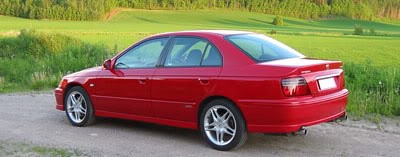After owning multiple generation Accords I never took much notice of the leather types. Since all my cars were purchased new they've each received the same care and detail products equally. So yesterday while cleaning our 00EXV6 interior I sort had an epiphany about the leather.
Because this car was once my dad's it still has sheepskins on the front seats. And due to numerous other priorities it went over a year without the leather being cleaned or conditioned. So after pulling off the sheepskins I was surprised to see how well the leather was holding up.
Perhaps due to the fact the car spent it's first 13 years in LA where the heat isn't as oppressively long lasting or maybe the sheepskins acting an ultra-violet shield or my dad's fastidious habit of keeping it garaged (mostly) and my visits allowing me to detail it (or all the above). But here it is no wear, no rips, no scuffs and looking remarkably new.
I realize almost every car company applies leather to the top seating surfaces (mostly) but there is a growing trend to use softer leather usually in higher end models.
So here is the question, is there a correlation between leather softness and durability?
I recall reading somewhere that all car makers struggle with leather. Generally the softer the leather the faster it wears. Since our Gen 6 Accord's leather feels more like vinyl than leather could this be the reason it has held up so well?





Because this car was once my dad's it still has sheepskins on the front seats. And due to numerous other priorities it went over a year without the leather being cleaned or conditioned. So after pulling off the sheepskins I was surprised to see how well the leather was holding up.
Perhaps due to the fact the car spent it's first 13 years in LA where the heat isn't as oppressively long lasting or maybe the sheepskins acting an ultra-violet shield or my dad's fastidious habit of keeping it garaged (mostly) and my visits allowing me to detail it (or all the above). But here it is no wear, no rips, no scuffs and looking remarkably new.
I realize almost every car company applies leather to the top seating surfaces (mostly) but there is a growing trend to use softer leather usually in higher end models.
So here is the question, is there a correlation between leather softness and durability?
I recall reading somewhere that all car makers struggle with leather. Generally the softer the leather the faster it wears. Since our Gen 6 Accord's leather feels more like vinyl than leather could this be the reason it has held up so well?







Comment